Yes, Cherry Shrimp can drop their eggs, and it’s a common concern among shrimp keepers. Various factors can lead to this behavior, including stress, poor water conditions, or the shrimp’s inexperience. Understanding these factors can help prevent egg dropping and ensure a healthy shrimp colony.
Hello there, fellow shrimp enthusiasts! I remember the first time I saw one of my cherry shrimp drop her eggs. It was a moment of panic, confusion, and a dash of heartbreak. We’re in this hobby to see those little shrimplets swimming around, right? But don’t worry, I’ve been down this road and am here to guide you through it. In this article, we’ll delve into the reasons why our beloved cherry shrimp might drop their eggs and, more importantly, what we can do to prevent it.
Understanding the Cherry Shrimp’s Egg-Dropping Behavior
Ah, the cherry shrimp, a delightful little creature that adds a pop of color and a dash of intrigue to any aquarium. But when it comes to their reproductive habits, things can get a bit… well, egg-citing. You see, female cherry shrimp carry their eggs in their swimmerets, those little leg-like appendages under their bodies. It’s a sight to behold, a shrimp mom-to-be carrying greenish eggs around her clutch, like a tiny aquatic kangaroo. But sometimes, those eggs don’t stay put. They end up scattered around the tank, leaving us shrimp keepers scratching our heads and asking, “Why?”
Egg-dropping in cherry shrimp isn’t an act of forgetfulness or carelessness. It’s a response to certain conditions or situations that make the shrimp feel that carrying the eggs to term isn’t the best idea. It’s a bit like their version of a stress response. And while it can be disheartening to see those precious eggs abandoned, understanding this behavior is the first step towards preventing it.
In the wild, cherry shrimp are exposed to a variety of conditions that might not be conducive to successful egg carrying. Things like sudden changes in temperature, water quality, or the presence of predators can trigger an egg-dropping response. It’s a survival strategy for the shrimp to ensure that it can live to breed another day.
In our home aquariums, these stressors can take different forms. Maybe the water temperature fluctuates too much, or there are high ammonia or nitrite levels. Maybe the shrimp is just too young and inexperienced to carry her eggs to term. Or perhaps there’s that pesky fish that won’t leave her alone. Whatever the cause, the result is a shrimp that drops her eggs.
But don’t despair, dear shrimp keeper. Understanding this behavior is half the battle. With some knowledge and careful management, we can create an environment where our cherry shrimp feel safe, comfortable, and ready to carry their eggs to hatching.
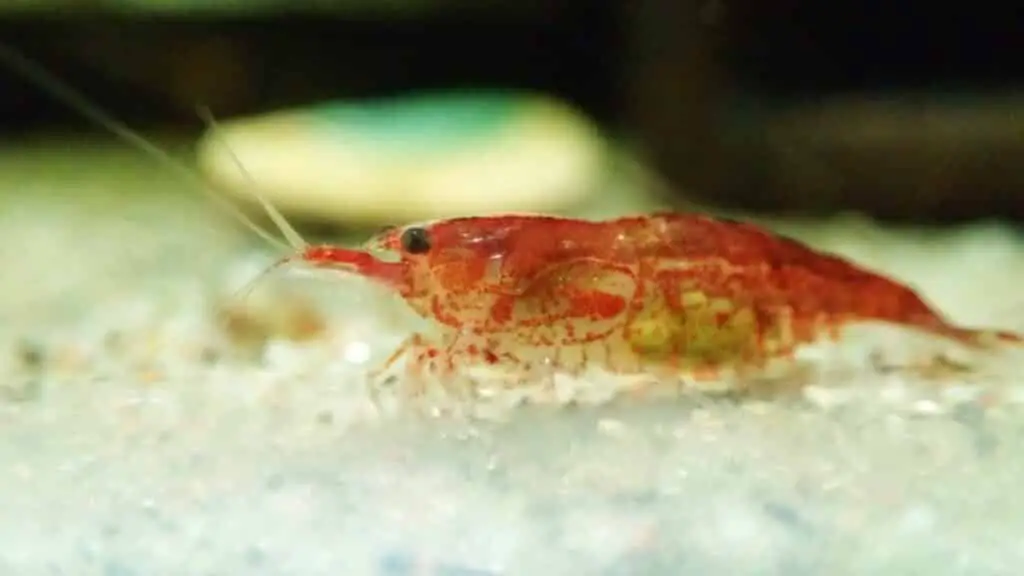
Stress Factors that Lead to Cherry Shrimp Dropping Eggs
Stress, my dear shrimp keepers, is a universal language. It’s not just us humans who experience it; our cherry shrimp do too. And when they’re stressed, they might decide to drop their eggs. It’s their way of saying, “Hey, something’s not right here!” So, let’s take a closer look at some of these stress factors, shall we?
First up, we have the big one: water quality. Cherry shrimp are sensitive souls, and they like their water just so. Too much ammonia or nitrite? They’re not fans. A sudden change in pH or temperature? That’s a no from them. These water parameters can fluctuate for various reasons, like overfeeding, infrequent water changes, or even adding new inhabitants to the tank without proper acclimation. And when they do, our shrimp might decide it’s not the best time to carry eggs.
Next, let’s talk about tank mates. Cherry shrimp are peaceful creatures and don’t appreciate being harassed by their tank mates. Larger, more aggressive fish can stress them out, leading to egg-dropping. It’s like trying to carry a tray of eggs while someone’s poking you. Not fun, right?
Then there’s the issue of overcrowding. Too many shrimp in a small space can lead to competition for food and hiding spots, causing stress. It’s like trying to raise a family in a crowded apartment. It can be done, but it’s not ideal.
So, there you have it, some of the main stress factors that can lead to our cherry shrimp dropping their eggs. But remember, knowledge is power. By understanding these factors, we can take steps to mitigate them and create a more shrimp-friendly environment. And that, my friends, is a win for everyone.
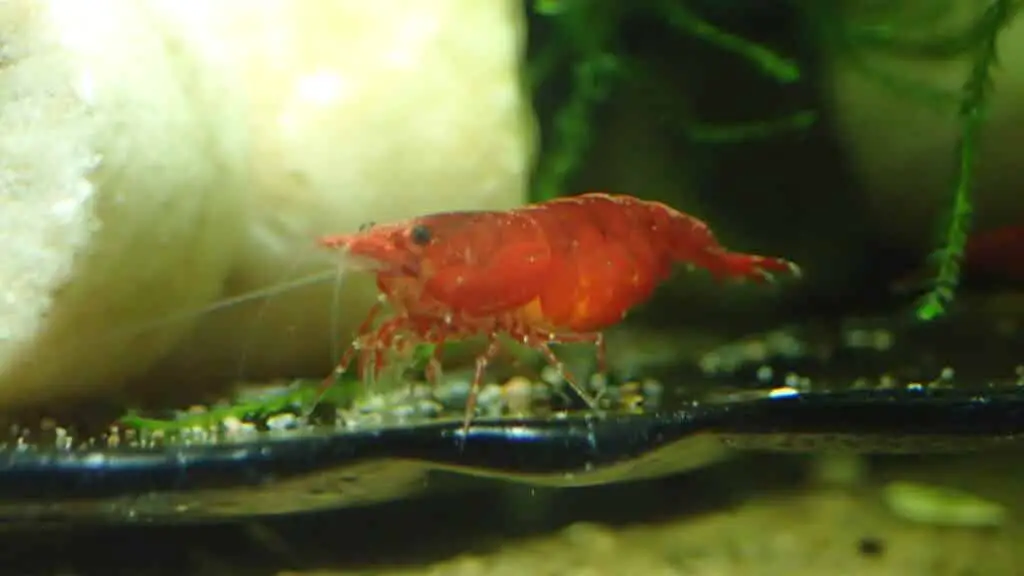
The Role of Water Conditions in Shrimp Dropping Eggs
Water conditions play a starring role in the soap opera that is cherry shrimp egg-dropping. It’s like the director behind the scenes, setting the stage for our shrimp’s behavior. If the water conditions are off, our shrimp might decide to drop the curtain on their egg-carrying performance. So, let’s take a closer look at this unseen director, shall we?
First, let’s talk about temperature. Cherry shrimp like their water to be in the Goldilocks zone: not too hot or cold, but just right. Generally, that’s between 65 and 80 degrees Fahrenheit. If the temperature swings too much or too quickly, it can stress our shrimp and lead to egg-dropping. It’s like trying to carry a basket of eggs while walking on a tightrope. One wrong move, and those eggs are history.
Next up, we have pH. Cherry shrimp prefer slightly acidic to neutral water, with a pH between 6.5 and 7.5. If the pH swings too far in either direction, it can cause stress and lead to egg-dropping. It’s like trying to balance those eggs on a seesaw. Too much tilt, and down they go.
Then there’s the issue of ammonia and nitrite. These waste products can build up in the water if the tank isn’t properly cycled or if there’s too much uneaten food. High ammonia or nitrite levels are toxic to shrimp and can lead to egg-dropping.
Lastly, we have general hardness (GH) and carbonate hardness (KH). These parameters affect the mineral content of the water, which is important for shrimp health and egg development. If the GH and KH are too low, the shrimp might have trouble molting and carrying eggs.
So, there you have it. Water conditions play a crucial role in whether our cherry shrimp decide to carry their eggs to term or drop them. By keeping an eye on these parameters and making adjustments as needed, we can help set the stage for a successful shrimp breeding performance. And that, my friends, is a standing ovation in the shrimp keeping world.
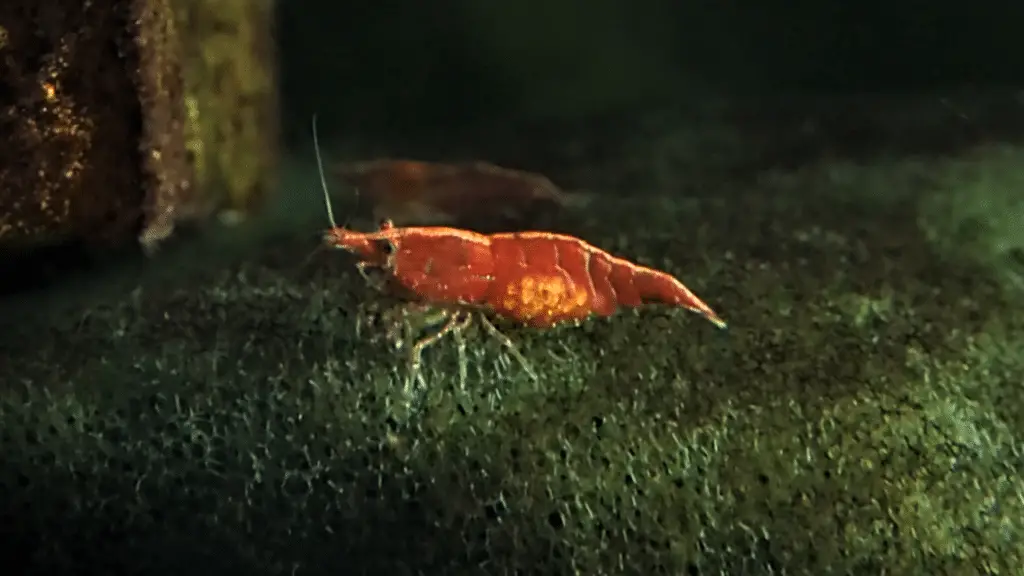
Cherry Shrimp Egg Dropping: A Common Connection
Ah, to be young and inexperienced. We’ve all been there, right? Well, our cherry shrimp are no different. When it comes to carrying eggs, first-time shrimp moms can sometimes get a bit… overwhelmed. It’s like they’ve been handed this precious bundle of eggs, but they haven’t quite figured out what to do with them. And so, they drop them. But don’t worry, it’s not a sign of bad parenting. It’s just a part of the learning curve.
You see, carrying eggs is a big responsibility. The female shrimp has to keep the eggs clean and oxygenated while going about her usual shrimp business. It’s a bit like trying to juggle eggs while also doing your grocery shopping, cleaning the house, and cooking dinner. It’s a lot to handle, especially if you’re new to it.
In the wild, cherry shrimp start breeding at a young age, often when they’re still quite small. This early start can sometimes lead to egg-dropping, simply because the shrimp isn’t fully grown and doesn’t have the strength or experience to carry the eggs to term. It’s like a teenager trying to carry a heavy load. They might be able to do it, but it’s a struggle.
But here’s the good news: with time and experience, most cherry shrimp get the hang of it. They learn how to carry their eggs, clean them, and keep them safe from predators. It’s beautiful to see, a shrimp mom-to-be confidently carrying her clutch of eggs.
So, if you see a young, inexperienced shrimp drop her eggs, don’t despair. It’s not a failure; it’s a learning experience. And with a bit of patience and good tank management, you’ll soon see those little shrimplets swimming around. And that, my friends, is the joy of shrimp keeping.
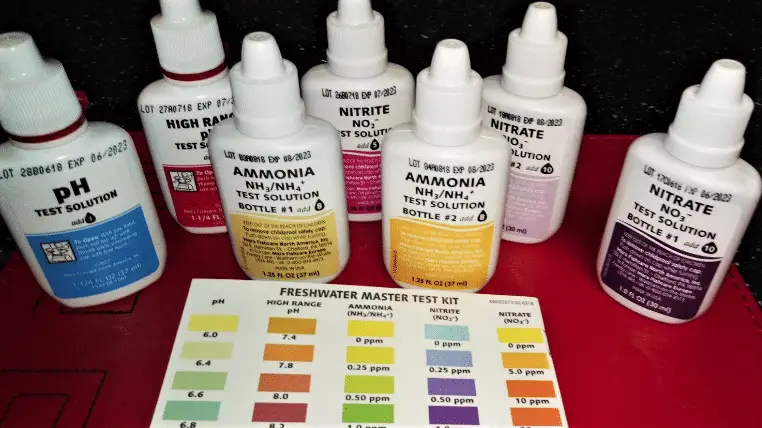
Preventive Measures to Stop Shrimp from Dropping Eggs
Now that we’ve explored the why behind our cherry shrimp dropping eggs, let’s turn our attention to the how – how can we prevent this from happening? It’s like we’ve diagnosed the problem; now it’s time to prescribe the treatment.
First and foremost, we need to keep an eye on those water parameters. Regular testing can help us spot any issues before they become a problem. If the temperature, pH, ammonia, nitrite, GH, or KH are off, it’s time to take action. This might involve adjusting the heater, adding a buffer to stabilize the pH, or doing a water change to reduce waste levels. It’s like we’re the doctors of our shrimp tank, and regular check-ups are key.
to reduce waste levels. It’s like we’re the doctors of our shrimp tank, and regular check-ups are key.
Next, let’s consider our tank setup. Cherry shrimp like plenty of hiding spots, especially when they’re carrying eggs. Providing plants, rocks, or shrimp tubes can give them a place to retreat and feel safe.
Then there’s the issue of tank mates. It might be time to reconsider if you’ve got larger, more aggressive fish in the tank. Cherry shrimp are peaceful creatures, and they don’t appreciate being harassed. It’s like trying to relax in a room with a hyperactive toddler. Not the most peaceful environment, right?
Lastly, we need to consider our shrimp’s diet. A balanced diet can help ensure that our shrimp are healthy and strong, ready to carry those eggs to term. This might involve providing a variety of foods, like algae wafers, blanched vegetables, and high-quality shrimp pellets.
So, there you have some preventive measures to help stop our cherry shrimp from dropping their eggs. It might take a bit of work, but the reward – seeing those little shrimplets swimming around – is well worth it. And that, my friends, is the cherry on top of the shrimp keeping cake.
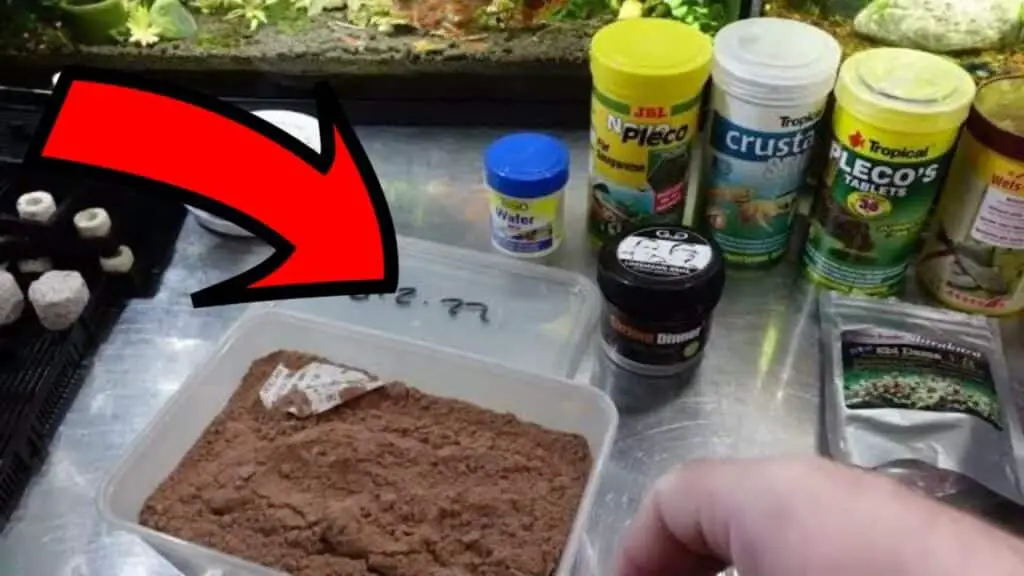
The Impact of Diet on Cherry Shrimp’s Egg Retention
When it comes to carrying eggs, our cherry shrimp need all the strength they can get. And just like us, their strength comes from their diet. It’s like they’re athletes in training, and the right food is their fuel. So, let’s take a closer look at the impact of diet on cherry shrimp’s egg retention, shall we?
First up, we have protein. Cherry shrimp need protein to grow and reproduce. It’s like their building block, helping them to molt, carry eggs, and recover from the stresses of shrimp life. Foods like high-quality shrimp pellets, bloodworms, and brine shrimp can provide this much-needed protein.
Next, let’s talk about vegetables. Cherry shrimp love a bit of green in their diet. Blanched vegetables like spinach, zucchini, and peas can provide essential vitamins and minerals, helping to boost the shrimp’s overall health and egg-carrying ability. It’s like they’re eating their spinach, just like Popeye, to get strong and healthy.
Then there’s the issue of calcium. Cherry shrimp need calcium for their exoskeletons, which is especially important when they’re carrying eggs. Foods like cuttlebone, spinach, and specialized shrimp pellets can provide this essential mineral. It’s like they’re drinking their milk to get strong bones, only in shrimp form.
Lastly, we have variety. Just like us, cherry shrimp appreciate a varied diet. Providing a mix of different foods can help ensure they’re getting all the nutrients they need. It’s like they’re enjoying a buffet, sampling a bit of everything to get a balanced meal.
So, there you have it. Diet plays a crucial role in cherry shrimp’s egg retention. Providing a balanced, varied diet can help our shrimp stay strong and carry their eggs to term. And that, my friends, is a recipe for shrimp keeping success.
Conclusion
Egg-dropping can be a common concern in the fascinating world of cherry shrimp keeping. But with a deeper understanding of the factors contributing to this behavior, we can take proactive steps to prevent it. By maintaining optimal water conditions, providing a stress-free environment, and offering a balanced diet, we can support our shrimp in successfully carrying their eggs to term. Remember, every shrimp keeper’s journey is unique, and patience is often your best ally.
If you ever find yourself in a pinch or need a bit of advice, please don’t hesitate to contact me. We’re all in this together, navigating the ebbs and flows of shrimp keeping. Happy Shrimp Keeping!
FAQ Cherry Shrimp
Q. Do cherry shrimp eat dropped eggs? A. No, cherry shrimp do not typically eat dropped eggs. While they are omnivorous and eat a variety of foods, their own eggs are not usually part of their diet.
Q. What does it look like when cherry shrimp lay eggs? A. When cherry shrimp lay eggs, you’ll notice a clutch of greenish eggs under their bodies. The female shrimp carries these eggs in her swimmerets, where she keeps them clean and oxygenated.
Q. How long does it take for cherry shrimp eggs to hatch? A. The hatching time for cherry shrimp eggs can vary, but it typically takes around 30 days. The exact time can depend on factors like water temperature and the overall health of the shrimp.
Q. How do cherry shrimp eggs hatch? A. Cherry shrimp eggs hatch when the embryos inside have fully developed. The baby shrimp, known as shrimplets, emerge fully formed but very small. They start to explore their surroundings and eat biofilm almost immediately.
Q. Can dropped shrimp eggs still hatch? A. It’s unlikely, but not impossible. Dropped shrimp eggs lack the care of the mother shrimp, which usually keeps them clean and oxygenated. However, in a well-maintained tank with optimal conditions, there’s a slim chance they might hatch.
